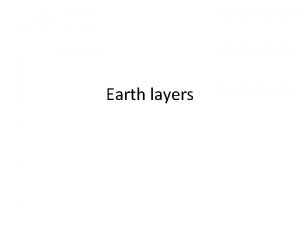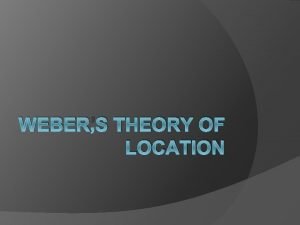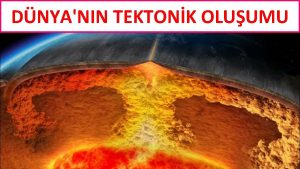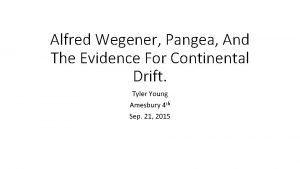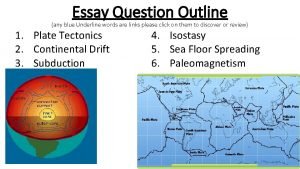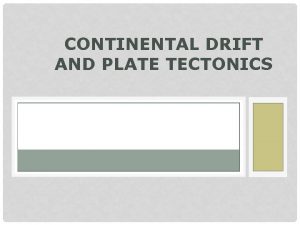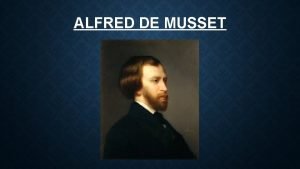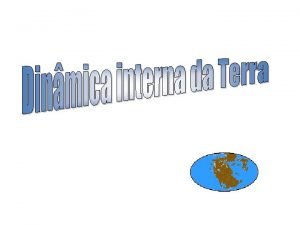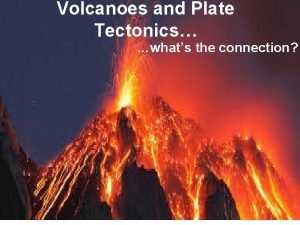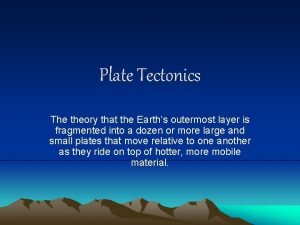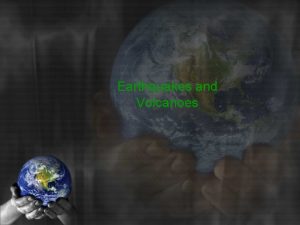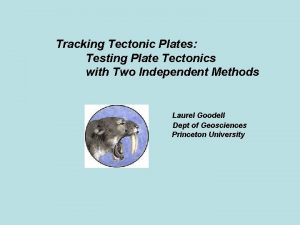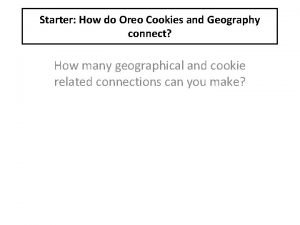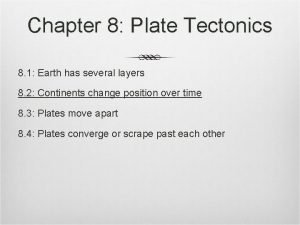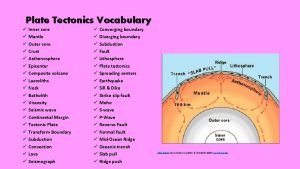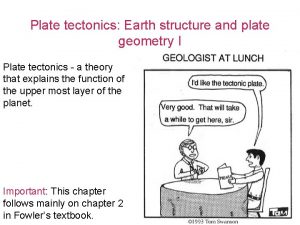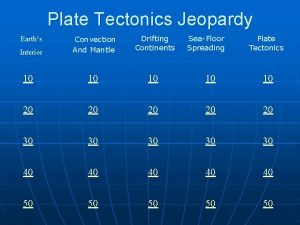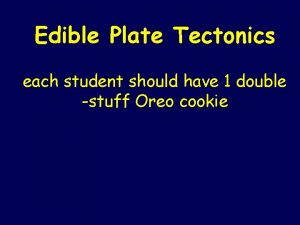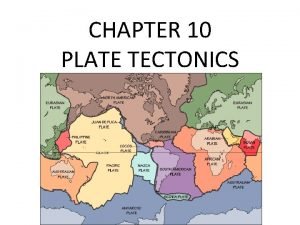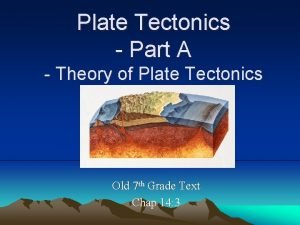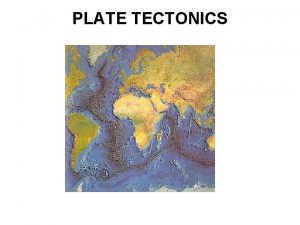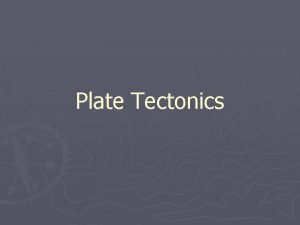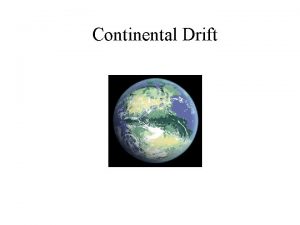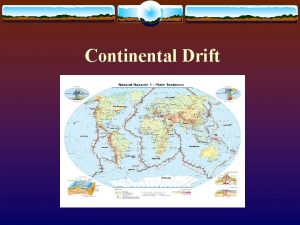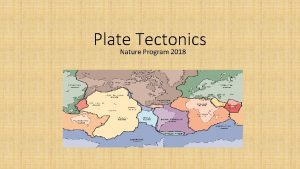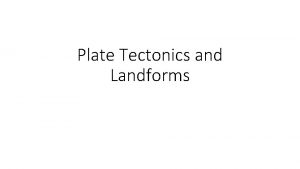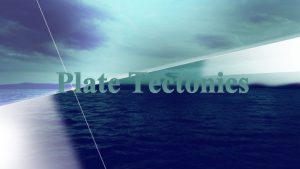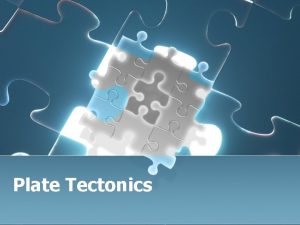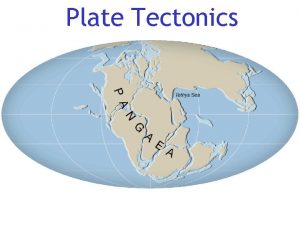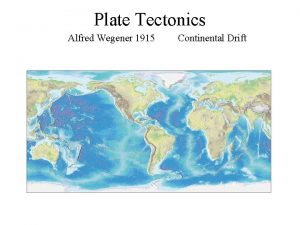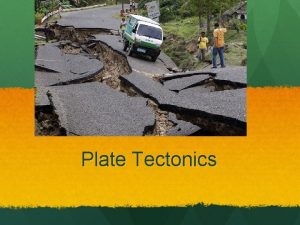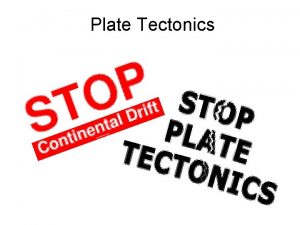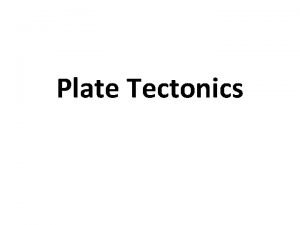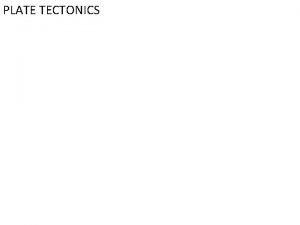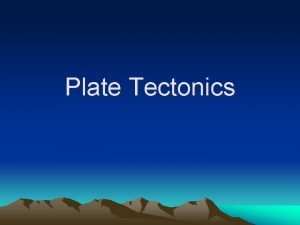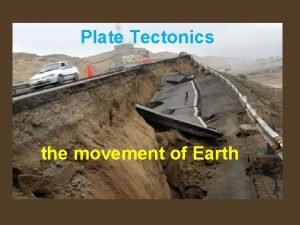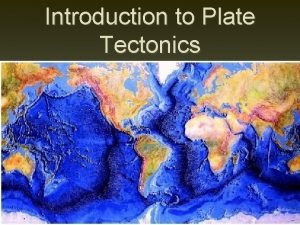Plate Tectonics Alfred Wegener Alfred Wegener discovered that


























- Slides: 26

Plate Tectonics

Alfred Wegener • Alfred Wegener discovered that the eastern coast of South America and the western coast of Africa fit together like puzzle pieces • pieced all the continents together to form a super continent named Pangaea. • Using the remains of ancient organisms, showed that 200 million years ago the same kinds of animals lived on continents that are now oceans apart

Pangaea

Plate Tectonics • Earths stiff outer shell is called the Lithosphere. • It consists of the crust and rigid upper portion of the mantle • Made up of 7 large pieces called tectonic plates. • The theory describing the movement of plates is called tectonic plates theory.


Why Do The Plates Move? • One hypothesis suggests that plate movement results from convection currents in the asthenosphere. • Asthenosphere is the hot, plastic portion of the mantle. • Theory of Continental Drift– Earth’s Crust and upper mantle are broken into plates an move around on the lower mantle (asthenosphere)


Divergent Plate Boundaries • A divergent plate boundary occurs where two plates move apart; a gap is created • Hot magma rises from the asthenosphere and cools forming new lithospheric rock. • The two diverging plates then pull the new lithosphere away from the gap.



Sea Floor Spreading • Mid-Oceanic Ridges are mountain ranges that form at divergent boundaries in oceanic crust. Magma rises from between the two diverging plates and fills the gap. New oceanic crust forms a large central valley, known as a rift valley. • The most studied Mid-Oceanic Ridge is the Mid. Atlantic Ridge. – runs down the center of the Atlantic Ocean from the artic ocean to an area off the southern tip of South America • Also found at Great Rift Valley (Eastern Africa)


Convergent Plate Boundaries • Can be an oceanic plate diving beneath continental or oceanic plates. • Andes Mountains is an example when India plate slammed into Asia plate - oceanic plate is more dense & dives beneath the continental plate. - This process is subduction • Ocean trenches, mountains, and volcanoes are formed at subduction zones – High temps and pressure cause plate to melt and form magma

Ocean Trenches Strange fish found 5 miles down Sea cucumber 5 miles down Deepest fish ever found in a trench.

Convergent Boundaries cont’d. • • Collision zone – 2 plates of similar densities collide Causes upward thrust, forming a mountain range The Andes on the right and the Himalayas on the left. 2 types – Oceanic to Oceanic – Continental to continental Subduction zone Continental-continental collision

Convergent Boundary

Two Oceanic plates collide • Denser plate bends under the other forming subduction zone • Deep sea trenches form, new magma rises as an island arc of volacanoes. – Islands of Japan – Volcanoes and Earthquakes likely.

Two Continental Plates • Both plates less dense than asthenosphere, – No Subduction • Collide and crumple forming Mountain Ranges – Earthquakes Likely – Himalayan Mountains in Asia Why no volcanoes? ? ?

The Himalayas • The Himalayas are the tallest mountain range in the world. • They formed during the collision between the tectonic plate containing India and the Eurasian plate

Transform Fault Boundaries • The cracks in the Earth where the rocks move past one another are called faults • Faults can occur any area where forces in the lithosphere are great enough to break rock • When rocks move horizontally past each other at faults the boundary is called a transform fault boundary • Earth Quakes are caused by transform fault boundaries

Transform Continued • 2 types – Two plates slide past one another moving in opposite directions – Two plates moving in same direction but at different speeds – Earthquakes likely • San Andreas Fault in California is Pacific Plate sliding past North American Plate – Each plate moves about 5 cm a year.

Transform Fault Boundary

Support for Tectonic Theory • As molten rock pours onto the ocean floor, iron minerals, such as magnetite, align themselves parallel to Earth’s magnetic field. • Earth’s Magnetic field has reversed direction many times during its history. • Differently oriented bands of magnetic rock • The rocks are youngest near the ridge • The rocks are older farther away from the ridge • Polar Wander Maps

Support con. ’t • Rock formations on South Africa and South America have the same layers (these continents fit together in the puzzle) • Fossil evidence

Fit together like a puzzle

Boundary review • 3 Types of boundaries:
 คือ
คือ Layers of earth
Layers of earth Alfred wegener
Alfred wegener Oreo tectonic plates
Oreo tectonic plates Yer kabuğu yapboz parçaları gibi birbirine
Yer kabuğu yapboz parçaları gibi birbirine Pangea alfred wegener
Pangea alfred wegener Picture of alfred wegener
Picture of alfred wegener Who was alfred wegener and what did he theorize
Who was alfred wegener and what did he theorize Alfred wegener biographie
Alfred wegener biographie Picture of alfred wegener
Picture of alfred wegener 1912 alfred wegener
1912 alfred wegener Plate tectonics definition
Plate tectonics definition Plate tectonics
Plate tectonics Plate tectonics
Plate tectonics Plate tectonics
Plate tectonics Evidence of the theory of plate tectonics
Evidence of the theory of plate tectonics Oreo objectives
Oreo objectives Harry hess and seafloor spreading
Harry hess and seafloor spreading Chapter 8 plate tectonics
Chapter 8 plate tectonics Inner core vocabulary
Inner core vocabulary Earth rotation
Earth rotation Plate tectonics game board
Plate tectonics game board Oreo cookies and plate tectonics
Oreo cookies and plate tectonics Fossils as evidence of continental drift
Fossils as evidence of continental drift Driving force of plate tectonics
Driving force of plate tectonics Continental drift vs plate tectonics theory
Continental drift vs plate tectonics theory Plate tectonics jeopardy
Plate tectonics jeopardy

